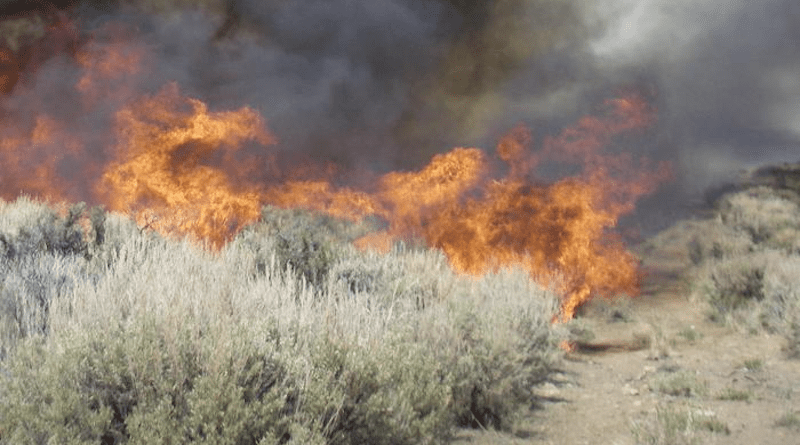Strange Burn: New Research Identifies Unique Patterns In Utah Wildfires
For a century fire ecologists have worked to decipher a complex question — what does a “normal” wildfire year look like in the West? That’s a hard question to answer for many reasons, but new research from a team in the Quinney College of Natural Resources shows that thanks to the state’s unique landscapes, Utah’s wildfire patterns may never fit into what is considered “normal” for other Western states.
Utah landscapes are diverse — from dense forests of pinyon-juniper to scattered patches of sagebrush and grasslands, Utah’s variable topography produces a tremendous range of wildfire behavior, said Jim Lutz, professor and author on the research. In some ways it defies easy characterization. Utah’s basin and range geography limits areas of connected vegetation and wildfire fuel, a big factor for minimizing the chance of megafires (so far) compared to other Western states, he said.
How a wildfire acts and the level of impact it has on a landscape depends in large part on the type of vegetation it moves through, how the vegetation and trees are connected across space, and the amount of built-up on-the-ground fuel left from the U.S.’s long policy of fire suppression. Although the state’s topography tends to produce comparatively smaller fires, that doesn’t mean Utah is out of the woods for impacts from future wildfires. Just because a fire isn’t big, doesn’t mean that it doesn’t have big impacts.
Lutz and Joseph Birch, from the Department of Wildland Resources, compiled and compared satellite data from the complete set of the hundreds of medium-sized (100-1,000 acres) and large (over 1,000 acres) wildfires in Utah between 1984 to 2022. They assessed each incident for burn severity in different types of vegetation. Typically the size of a fire is considered tied to its impact on the land — but this research found that medium-sized fires in Utah sometimes had a comparatively large impact.
On average, Utah wildfires tend to be heavily influenced by sagebrush and shrubland vegetation types — a category that covers a considerable area in the state. The medium-sized fires that the team analyzed in this type of non-forested vegetation had more severe impacts than large fires. In forests though, large fires burned at higher severity — sometimes much higher.
“Fires of any size can have considerable ecosystem benefits, including reducing the fuel loads that might later lead to extreme fire behavior, and reducing forest density. Both of these may become even more important in drought conditions,” said Lutz. “Prescribed fires that are as large as practically manageable can also provide these benefits.”
The authors suggest that deciding on a tractable size for prescribed burns, and predicting the characteristic results, could be aided by looking at the data on medium-sized fires in each vegetation type. Overall averages for burn severity of a given fire type, whether considered at the statewide level or for individual vegetation types, tend to be weighted to large fires, the researchers said.
“Fire activity from the recent past could help us understand what is going to happen in coming years, and serve as an informative baseline,” Lutz said, “but the long period of fire suppression we’ve had and increasing drought suggest that future fire may be more active than what we’ve seen in the past.”

